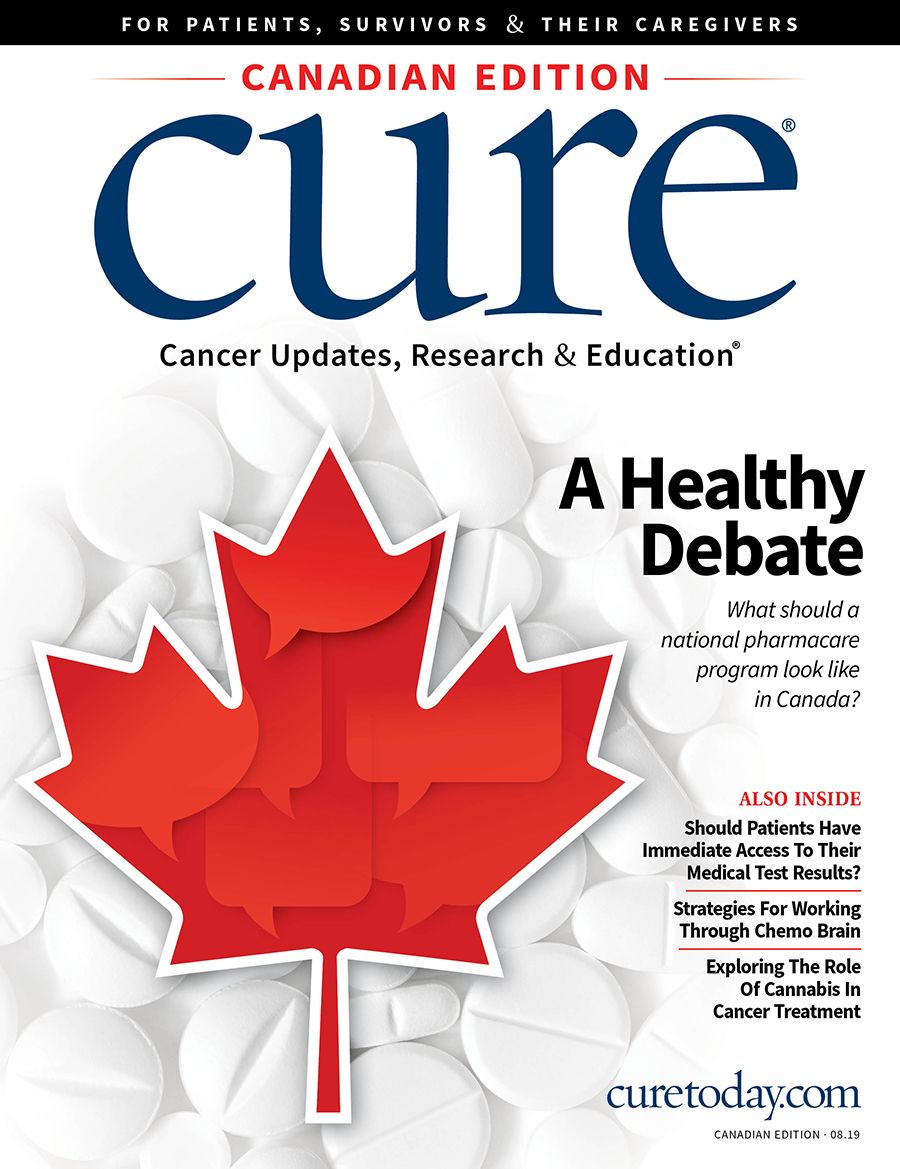Publication
Article
CURE, Canadian Edition
Filling the Medication Gap
Author(s):
It can be challenging and confusing to get prescription drugs paid for in Canada. Drug access navigators can help.
With Canada’s patchwork of pharmacy plans that offer varying benefits and leave many uncovered, accessing drugs can be difficult and confusing. As a drug access navigator at North York General Hospital, my mission is to help patients meet any challenges they face when it comes to getting the medicines they need.
In providing this aid, drug access navigators like me usually follow one of two paths, defined by the parameters of either private or public drug coverage. Knowing which type of plan the patient has or is eligible for determines what we will explore, which drugs will be available and when they can be obtained.
For example, if a patient has a private drug plan — one of thousands that exist in Canada — he or she may be able to obtain drugs that are not in the approved formulary of the Ontario government. This can allow patients to get newer drugs, but that is assuming their private drug plan will pay. We run into many challenges with private drug plans. Before being dispensed, almost every cancer drug must be pre-approved by these drug plans, with very specific criteria for those seeking pricier drugs. Even patients who need swift treatment may have to wait two weeks for a decision. Then, if the plan approves the drug, it may charge a co-pay (many private drug plans, in my experience, ask patients to pay 10 per cent to 30 per cent) or place an annual or lifetime cap on what it will pay. For example, if a drug costs $8,000 a month and a plan caps drug payments at $10,000 annually, then a patient is only covered for one month of the therapy in a year.
If a patient does not have a private drug plan, we will look into public coverage. For instance, patients in Ontario who are over 65 or under 25 are automatically covered by the Ontario Drug Benefit (ODB). This will pay for drugs as long as they’re on the government formulary. Almost all oncology drugs covered under this program must be authorized by the Exceptional Access Program (EAP), run by the Ontario Ministry of Health, so navigators often submit requests to this program on behalf of patients. These requests usually take one to two weeks to process, but in the meantime, patients can often start therapy immediately with help from the drug’s manufacturer.
If patients are over 25 but under 65 and have been prescribed expensive medications, we assist them in applying to Ontario’s Trillium Drug Program. This program provides access to the same drugs that are available to people over 65 or under 25, but patients must first meet a deductible equalling 4 per cent of their net household income; for most families, this works out to between $1,000 and $3,000 per year.
Often there is a gap of one to two years between Health Canada approving a new oncology drug and it becoming a benefit under the ODB or Cancer Care Ontario formularies. During this gap period, patients with a private plan may be able to get the drug, but it will not be paid for by the government. For those without a private plan, drug manufacturers may provide these drugs compassionately.
So, while drug access navigators are looking through coverage options, we often will enroll patients in patient support programs run by drug manufacturers. These programs provide financial support to patients who have co-pays, and can include free drugs. As drug access navigators, we rely on these programs heavily. For example, if someone is prescribed a drug that costs $6,000 a month with 80 per cent private coverage, the 20 per cent they owe will come to $1,200 a month. Instead of the patient paying $14,400 per year out of pocket, we would seek to have that $1,200 per month paid for by the patient support program. There are many such programs, and each has its own criteria and offerings. It is best to check with a drug access navigator to see what opportunities may exist for your specific situation.
In addition to these pathways, we also assist with requests to the Health Canada Special Access Program (SAP) for drugs not yet approved for use in Canada. For these requests to be approved, drug manufacturers must agree to provide the medication. There is no charge to patients for SAP drugs.
A final way that drug access navigators can help is with cancer genetic testing. These tests are often expensive, but they allow genetic alterations to be identified so that targeted therapies may be used. These kinds of requests are becoming more and more common in cancer care, as not all gene testing is paid for publicly. Unfortunately, coverage for private testing is limited right now, but patients with health spending accounts can use those dollars to pay for the tests.
If you’re a patient with cancer who is paying out of pocket for expensive medications or who needs assistance with drug coverage, you may be able to find aid. Many provinces have drug access navigators or reimbursement specialists at their cancer clinics who can look at your situation to see if there is any way to help; you may just need to ask. If you’re an Ontario resident, please visit odano.ca to learn more about oncology drug coverage and to reach out to a drug access navigator in your area.




